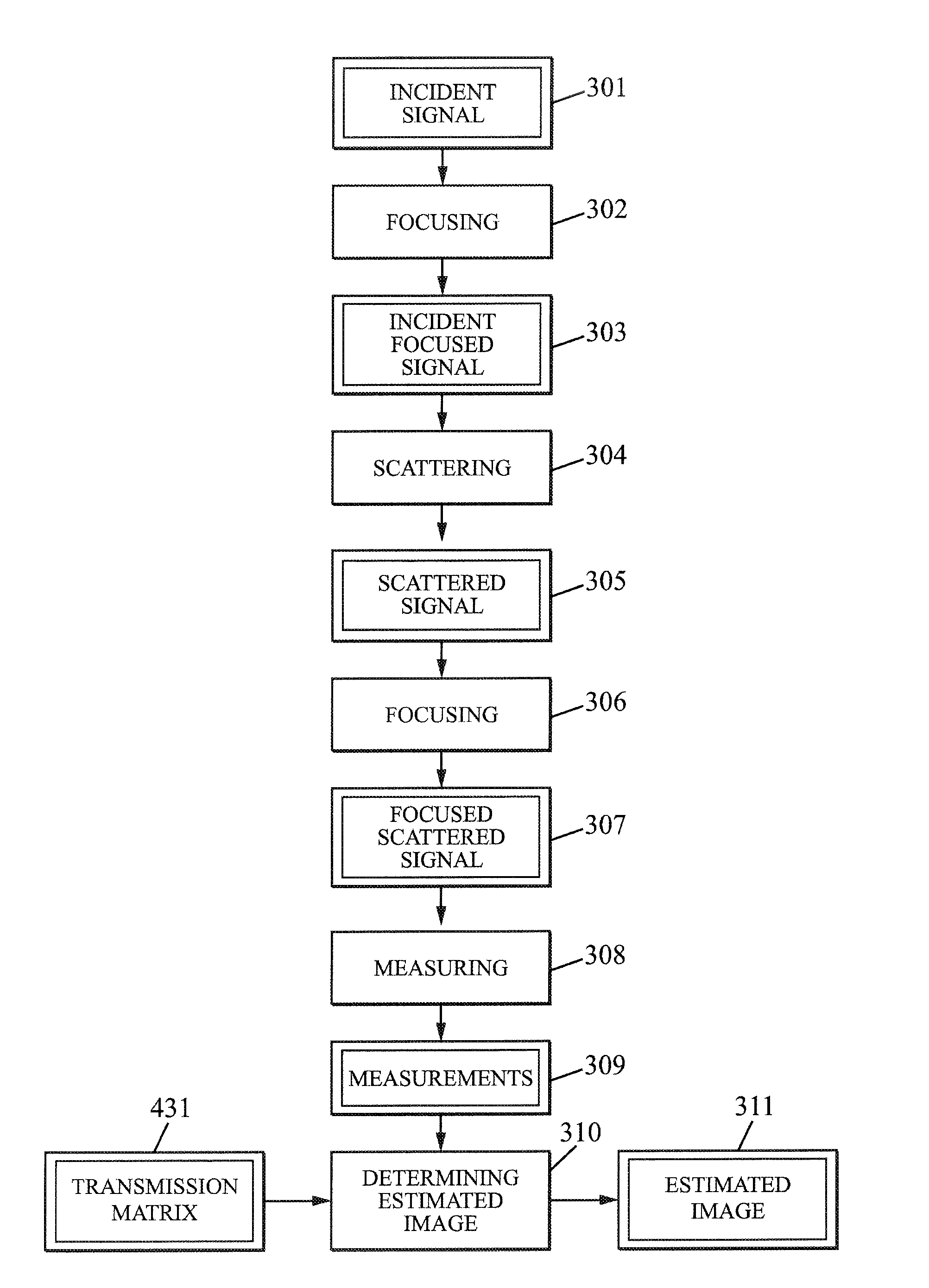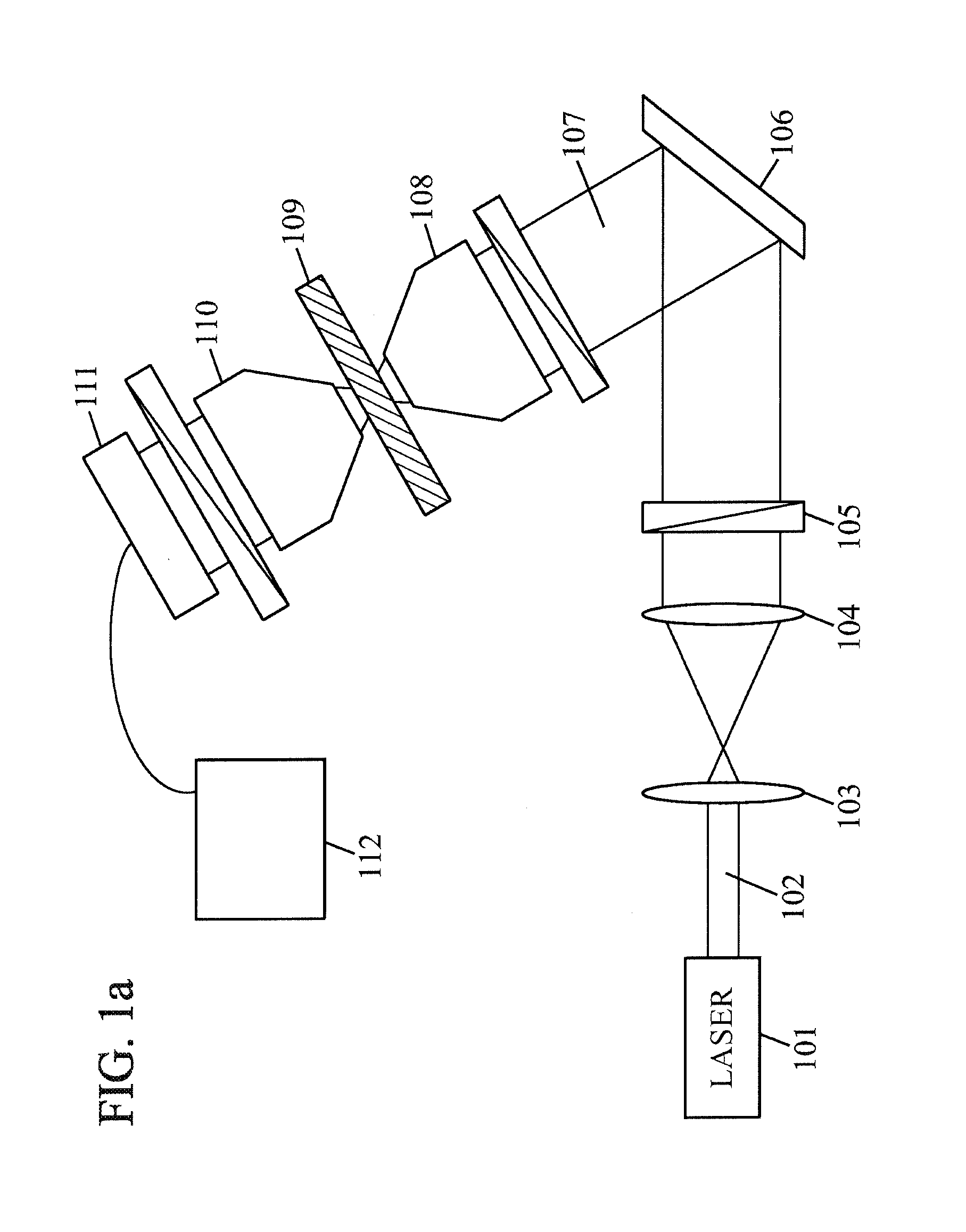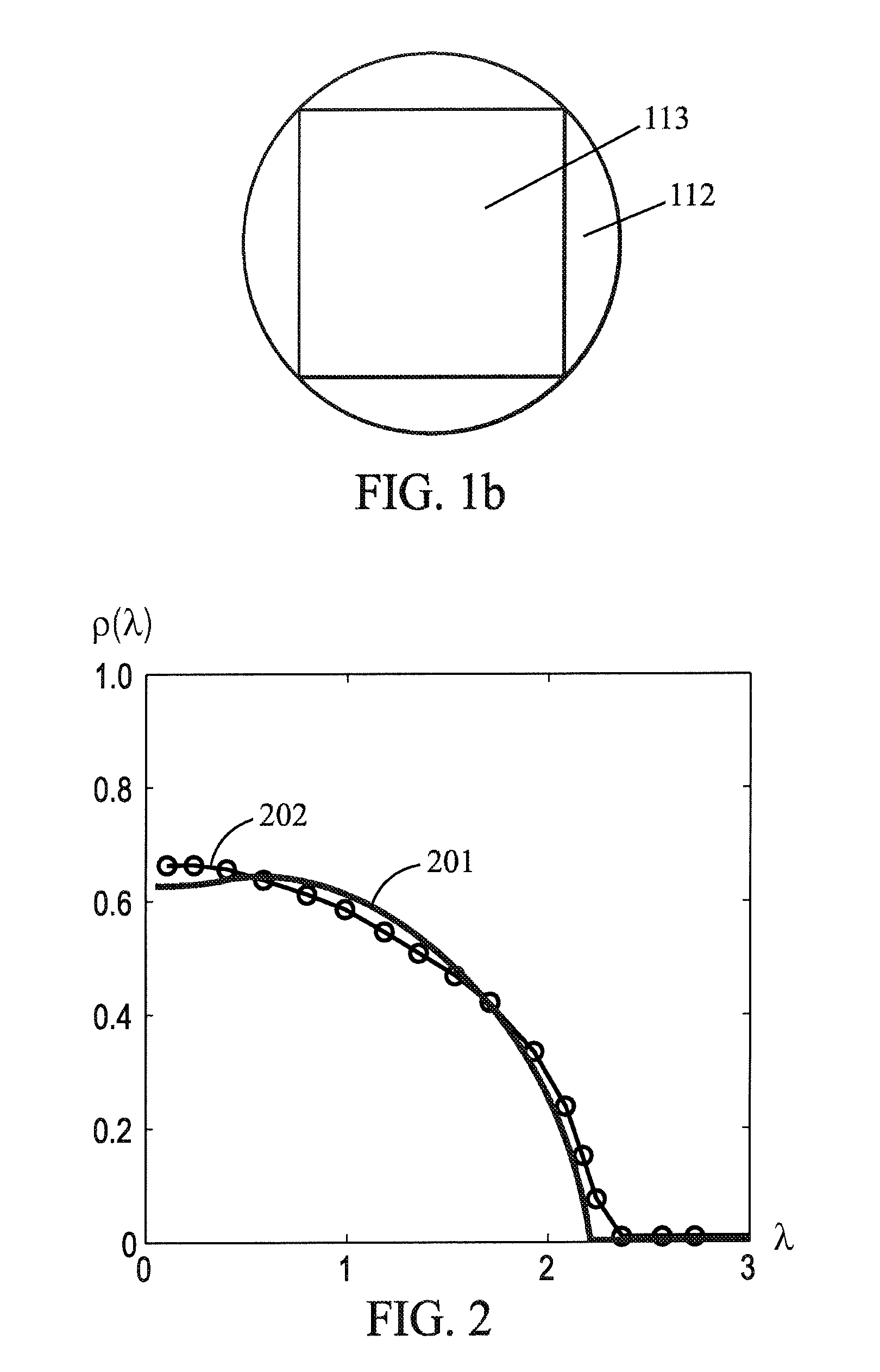Multiple Scattering Medium For Compressive Imaging
a scattering medium and compressive imaging technology, applied in the field of multiple scattering mediums for compressive imaging, can solve the problems of large amount of raw data generated by a large detector array that can require immediate compression, high cost and complexity of each detector,
- Summary
- Abstract
- Description
- Claims
- Application Information
AI Technical Summary
Benefits of technology
Problems solved by technology
Method used
Image
Examples
Embodiment Construction
[0049]The Compressed Sensing theory intends to characterize a signal with fewer measurements than by the standard Shannon-Nyquist regular sampling theory. A defining characteristic of Compressive Sensing is that less than one measurement is needed per estimated signal value; a N-sample image can be reconstructed at full spatial bandwidth from M<N measurements. In the following, the expression “element of information” is used as a generic expression for “samples”, “pixels at full resolution” or “elements of images”.
[0050]The possibility to recover signal from incomplete information comes from the uses of sparsity or compressibility of an image model. Most commonly acquired images do not consist in random sets of data but rather in organized ones, meaning that there exists some basis, frame or dictionary in which these images have a concise representation. The mathematical equivalent to this concise representation consists in saying that the image or signal x can ...
PUM
 Login to View More
Login to View More Abstract
Description
Claims
Application Information
 Login to View More
Login to View More - R&D
- Intellectual Property
- Life Sciences
- Materials
- Tech Scout
- Unparalleled Data Quality
- Higher Quality Content
- 60% Fewer Hallucinations
Browse by: Latest US Patents, China's latest patents, Technical Efficacy Thesaurus, Application Domain, Technology Topic, Popular Technical Reports.
© 2025 PatSnap. All rights reserved.Legal|Privacy policy|Modern Slavery Act Transparency Statement|Sitemap|About US| Contact US: help@patsnap.com



